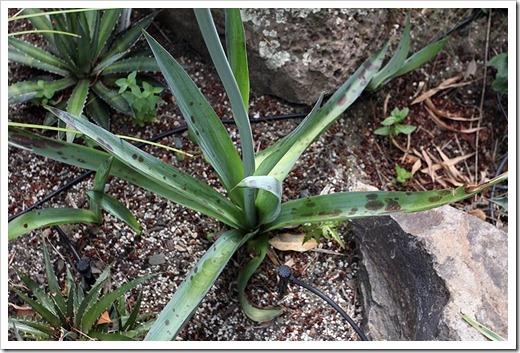Porcupine tomato

I still remember the first time I saw a porcupine tomato ( Solanum pyracanthon or Solanum pyracanthum ). The vivid orange spines looked so vicious but at the same time irresistible. I simply had to touch them and when I did, I was surprised. As lethal as the spines looked, they were actually fairly soft. I didn’t buy that plant because it was expensive, but this spring I found an inexpensive 4-inch seedling at Annie’s Annuals in Richmond. It’s easily tripled in size since April. Like its relative, the edible tomato ( Solanum lycopersicum ) it loves the heat.




